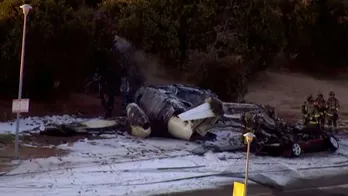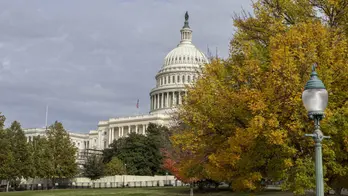Nicolaus Copernicus: The man who stopped the sun and moved the Earth
Frombork is a small, quiet town perched on the shore of the Vistula Lagoon in northern Poland.
Fishermen keep their boats in a cozy port. In the summer, a ferry shuttles passengers across the bay to the narrow slip of land called the Vistula Split, famous for white sandy beaches on the Baltic Sea coast.
Up on a hill, overlooking the bay, sits an impressive medieval cathedral and castle complex constructed entirely of red brick.

Port of Frombork, Poland (Danuta Hamlin/Fox News Digital)
These days, life goes on at a slow pace in picturesque Frombork, but in the 16th century, a revolution happened here, not a bloody one, but the Copernican Revolution.
MICHIGAN MAN FINDS 1953 LOVE LETTER PENNED BY ARMY SOLDIER: 'IT'S ALMOST LIKE POETRY'
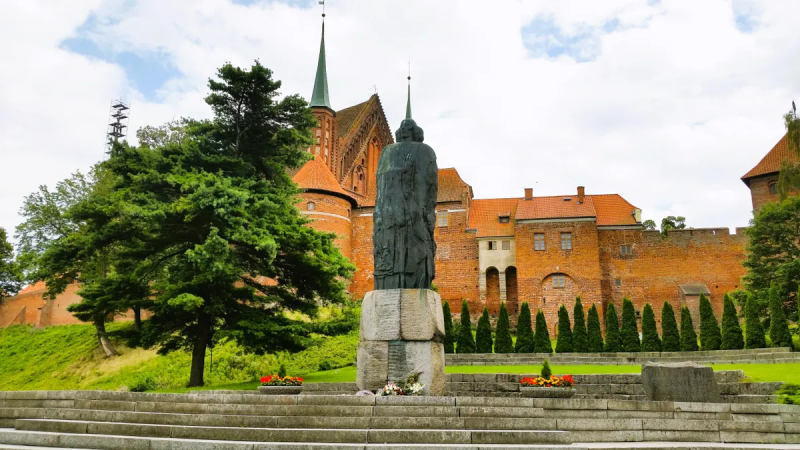
Nicolaus Copernicus Monument at the Cathedral Hill in Frombork, Poland. (Danuta Hamlin/Fox News Digital)
A statue of Polish astronomer Nicolaus Copernicus stands tall in front of the historic complex. During the day, tourists and astronomy enthusiasts visit the museum and enjoy a star-studded show at the planetarium.
At night, the dark sky above the bay shines with thousands of celestial bodies, and the Big Dipper, also known as the Great Bear constellation, loiters in the northern sky, right above the majestic cathedral. Copernicus lived in this town for over 30 years and wrote his work, "On the Revolutions of the Heavenly Spheres," here. It was treaty on astronomy that shattered the way humanity understood the universe and its own place in it.
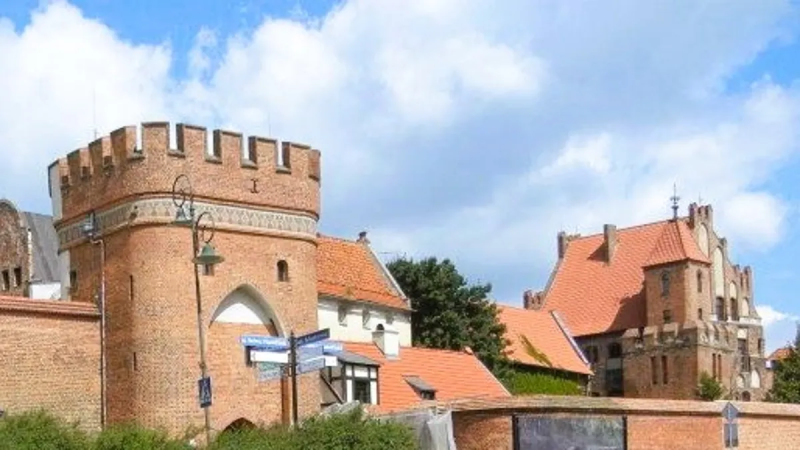
The medieval town of Toruń, Poland, the birthplace of astronomer Nicolaus Copernicus, a UNESCO World Heritage Site. (Danuta Hamlin/Fox News Digital)
Copernicus was born Mikolaj Kopernik in the city of Toruń on the Vistula River. He was the youngest child of Mikolaj Kopernik, Sr., a wealthy copper merchant who moved to Toruń from Kraków, at the time the capital city of Poland. His mother, Barbara, also came from a prominent merchant family.
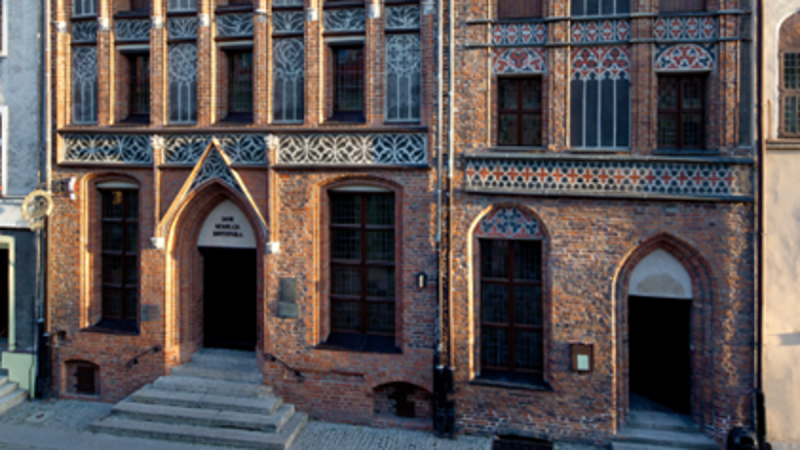
Dom Kopernika: House of Nicolas Copernicus Museum, Toruń, Poland. (Andrzej R. Skowronski)
Young Mikolaj grew up in a happy, elegant home with three older siblings — two sisters and a brother. But when he was only 10 years old, tragedy struck when his beloved father lost his life. His maternal uncle, Lucas Watzenrode, stepped in and took the Kopernik children under his protection.
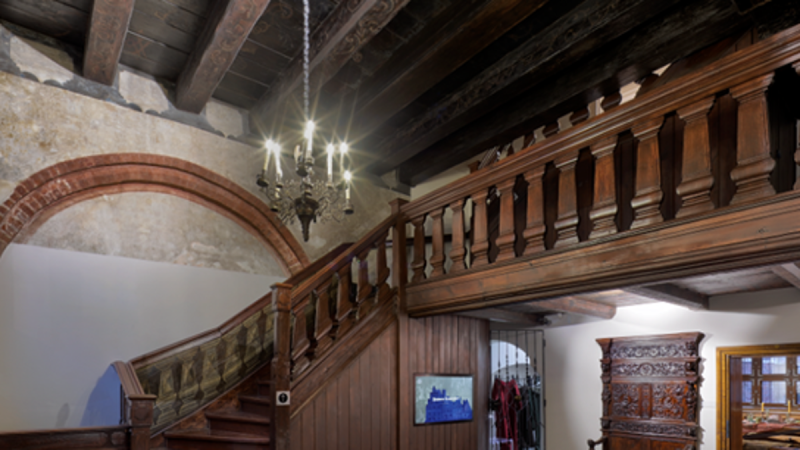
Dom Kopernika: House of Nicolas Copernicus Museum, Toruń, Poland. (Krzysztof Deczynski)
When the time came, Mikolaj enrolled at the University of Kraków (today known as Jagiellonian University). His passions were math and medicine, but it was in Kraków where he began to develop an interest in astronomy and also began signing his name in Latin — Nicolaus Copernicus.
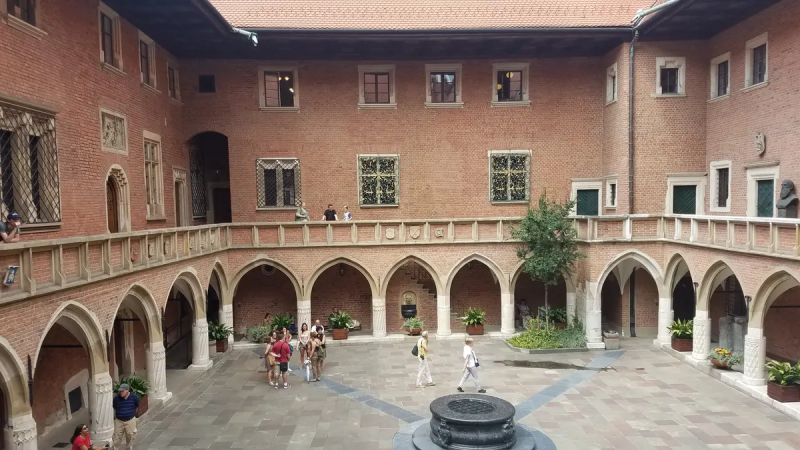
The Collegium Maius, Jagiellonian University, in Kraków, Poland. (Danuta Hamlin)
His uncle, by this time a bishop in Varmia, wanted him to study canon law and enabled Nicolaus to continue his education at the University of Bologna and then in Padua.
Young Copernicus was a true Renaissance man and along the way he’d picked up some art lessons from Italian masters and painted a self-portrait. Yet his main focus remained on math and medicine, and according to historians, he gave some lectures about math while visiting Rome.
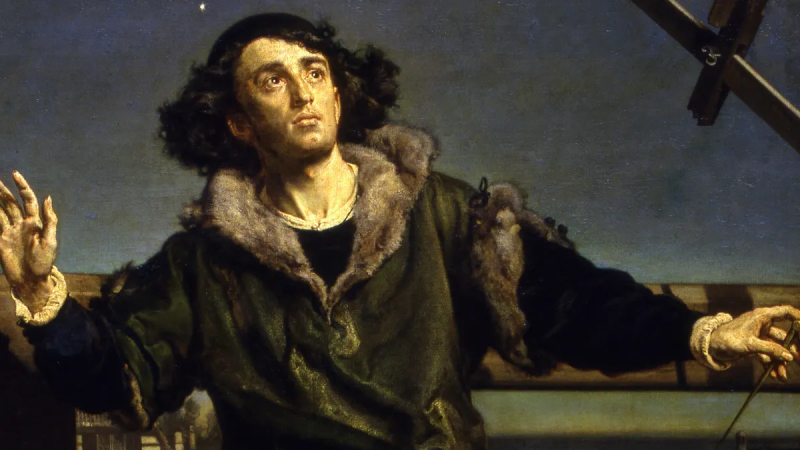
Nicolaus Copernicus painting, "A conversation with God." (Ze zbiorów Muzeum UJ/Jagiellonian University Museum Collections. Licencjia: CC BY 4.0 Uznanie autorstwa 4.0.)
In Bologna, he apparently rubbed shoulders with the university’s principal astrologer, Domenico Maria De Navarra, and kept a keen eye on the heavens. Eventually, Copernicus received a degree in canon law from the University of Ferrara and returned to Poland.
As a church canon in his uncle’s employ, he assumed various duties, such as overseeing church finances, collecting rents from church-owned lands and managing mills, a brewery and a bakery. He also applied his knowledge in the field of medicine and cared for the ill. After his uncle’s death, Copernicus relocated to the town of Frombork and continued in the church’s employ. He was as busy as ever yet still found time for what was to become his greatest hobby and life achievement — astronomy.

Frombork Cathedral and Castle Complex, overlooking the Vistula Lagoon. (Danuta Hamlin/Fox News Digital)
At the time, the solar system looked quite different. The Earth was at the center of the universe, and the sun, the moon and other heavenly bodies spun around it.

The sun and the moon above the Unisphere in Flushing Meadows–Corona Park, New York City. (Danuta Hamlin/Fox News Digital)
It made perfect sense, actually, for not only was it depicted this way in the Holy Scriptures, but everyone could see it with their own eyes. The sun appeared in the east each morning, traveling across the sky throughout the day to eventually disappear behind the western horizon, ushering in the night, the moon and the stars.
The Earth, on the other hand, did not appear to be moving.
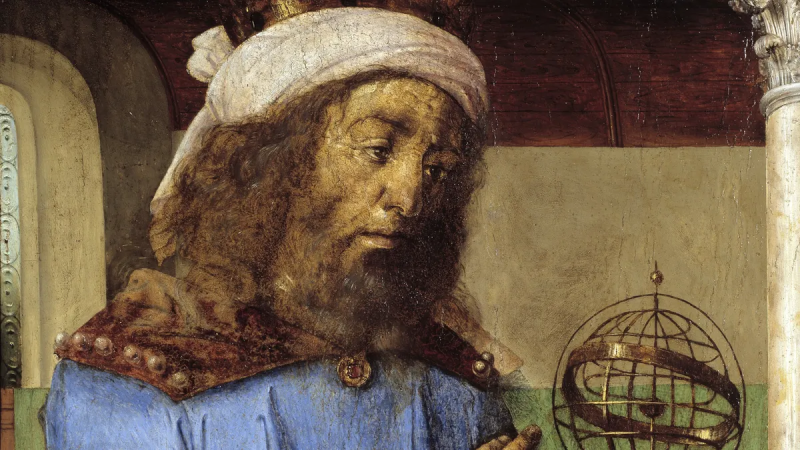
Portrait of Claudius Ptolemy by Pedro Berruguete and Juste De Gand (Leemage/Corbis via Getty Images)
Claudius Ptolemy, an Alexandrian mathematician and astronomer, formalized this view in the second century AD in his treatise Almagest. He came up with an intricate model for his geocentric system, explaining the ways in which the sun, moon and planets orbited the Earth. His theory stood accepted as the obvious truth for almost a millennium and a half, until a young man from the Kingdom of Poland applied his superior knowledge of math to stargazing and concluded that things simply did not add up.
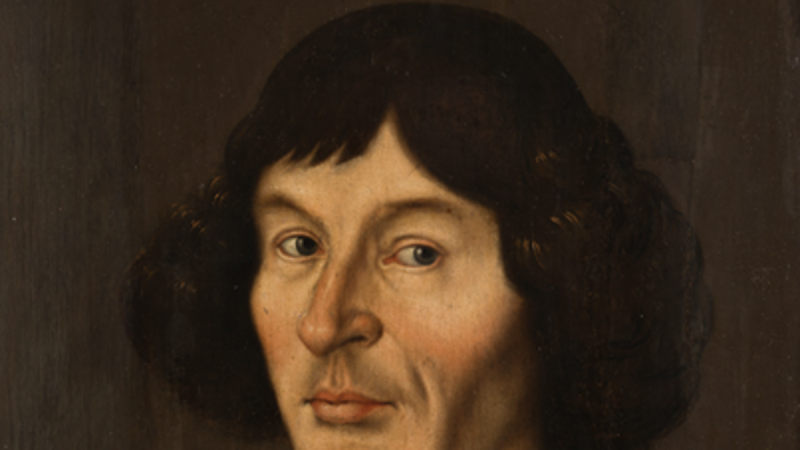
Nicolaus Copernicus portrait from Town Hall in Toruń, circa 1580 (Krzysztof Deczynski)
It is not known exactly when Copernicus had his "aha" moment, but it must have been exhilarating to realize that the common understanding of the solar system was incorrect, that the Earth was not at the center of it, but along with other planets, orbited the sun instead.
He also figured out that the Earth rotated daily on its axis, which accounted for night and day, and that the Earth’s tilted axis was the primary cause of the seasonal changes. It was truly an earth-shattering discovery.
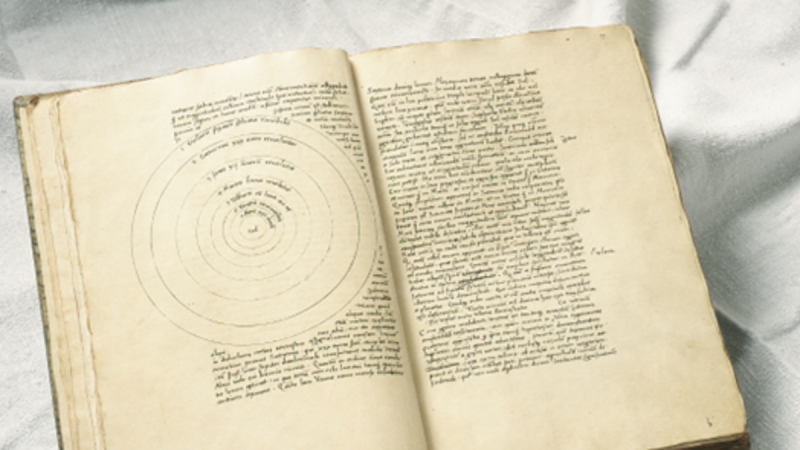
However thrilled he may have been, Copernicus did not have the luxury of announcing his findings to the rest of the world and shouting "Eureka!" in the manner of Archimedes of Syracuse.
Copernicus had to keep his discovery to himself and find a way to communicate it in a way that would not land him in a lot of trouble. For who on Earth would believe an amateur astronomer from Poland claiming that what science, the church and the Bible taught about the surrounding heavens was not exactly correct?
It was not only presumptuous, but could be seen as heresy. Copernicus did not want to be ridiculed by other scientists, nor did he want to irritate the church leaders. After all, they had their hands full with Martin Luther’s reformation.
According to scholars, Copernicus revealed his findings gradually, first discussing the matter with friends and clergymen and circulating pamphlets. He received encouragement from some of the church leaders who held him in high esteem. Others were less open-minded.
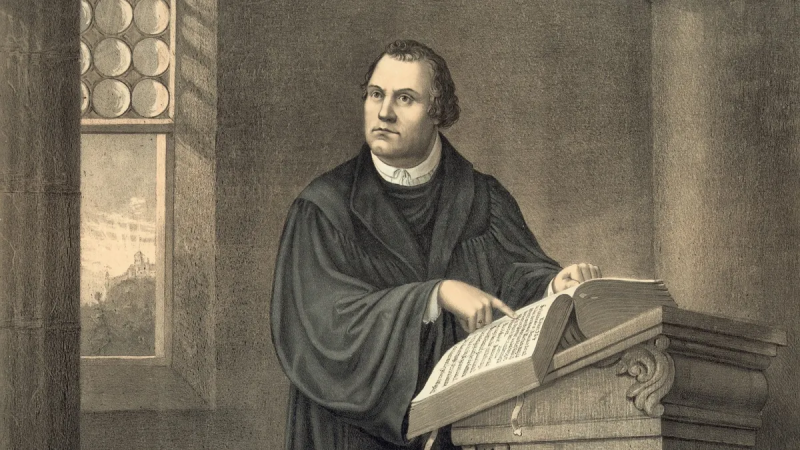
Antique print of Martin Luther in his study at Wartburg Castle in Eisenach (lithograph), 1882. (GraphicaArtis/Getty Images)
When the rumors of Copernicus’ theory reached Martin Luther, he dismissed him as an attention-grabbing opportunist.
"The fool wants to turn the whole art of astronomy upside-down. However, as Holy Scripture tells us, so did Joshua bid the sun to stand still and not the earth," Luther said.
In the meantime, Copernicus continued with his everyday duties in Frombork.
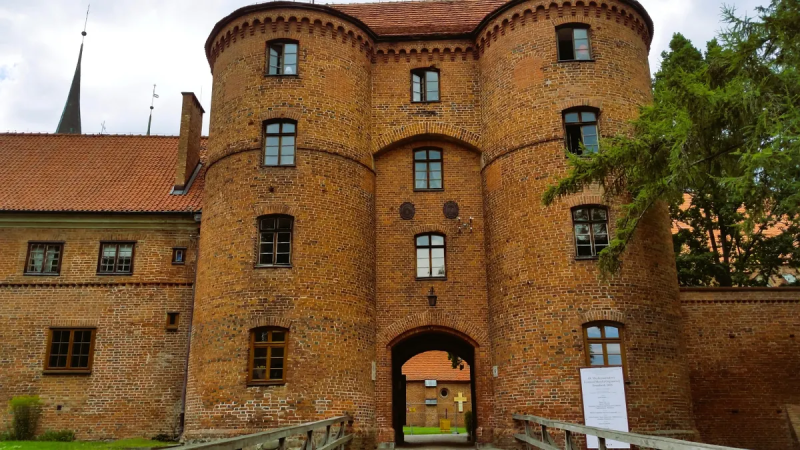
Frombork Castle Complex, Northern Poland. (Danuta Hamlin/Fox News Digital)
He represented the Polish King, Sigismund I the Old, as his envoy in negotiating a peace treaty with the Order of Teutonic Knights. Copernicus also understood the importance of a strong currency and, at the King’s request, wrote a treaty on how to deal with inflation, stating: "Although there are innumerable plagues by which kingdoms, principalities, and republics tend to decline, yet these four (in my judgment) are the most powerful: discord, mortality, the barrenness of the land, and cheapness of money."
ARTIST THREATENS TO DESTROY PICASSO, REMBRANDT, WARHOL MASTERPIECES WITH ACID IF JULIAN ASSANGE DIES IN PRISON
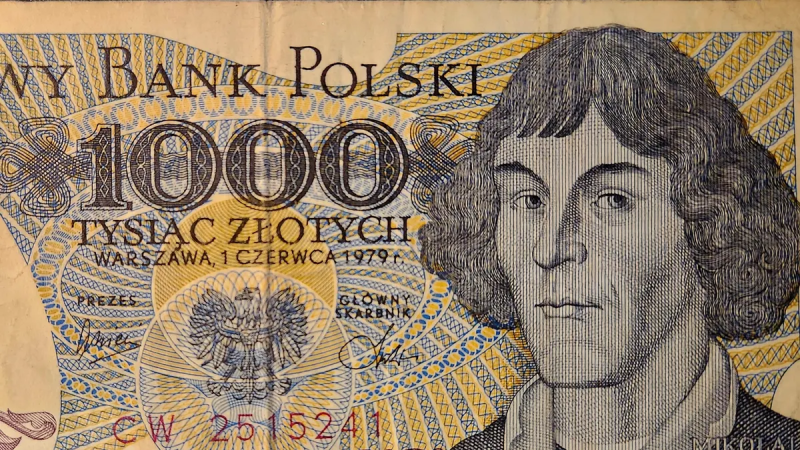
Copernicus’s likeness on a 1979 banknote (Danuta Hamlin/Fox News Digital)
Nicolaus Copernicus was a polymath with an incredible scientific mind and a man way ahead of his time. Yet he applied caution to publicizing his discoveries and waited many years to have his manuscript published. He only held a finished copy of his book on his deathbed. What a feeling it must have been to stop the sun, to move the Earth and to usher in the modern age of astronomy.
Nicholas Copernicus died May 24, 1543, and was buried at Frombork Cathedral.
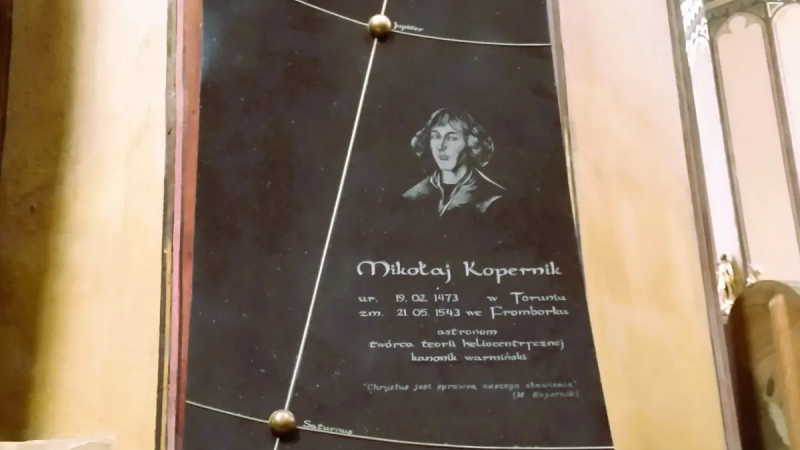
Nicolaus Copernicus tombstone at Frombork Cathedral (Danuta Hamlin/Fox News Digital)
It was not until 1616 when an Italian, Galileo Galilei, made his announcement that he was able to prove, with the use of his telescope, that Copernicus’ theory was correct. It was the beginning of the Enlightenment, the dawn of the era of modern science.
And perhaps the church leaders were slightly more at ease with the new heliocentric model of the solar system. They warned Galileo, however, not to champion the idea of heliocentrism. The same year, they also banned Copernicus’ De Revolutionibus. But 16 years later, when Galileo published his "Dialogue on the Two World Systems," he found himself investigated and subsequently put under house arrest.
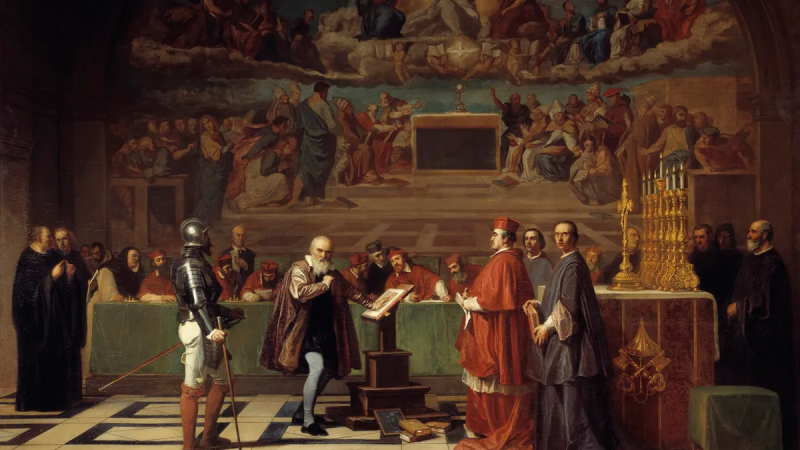
Galileo Galilei before the Holy Office in the Vatican by Robert Fleury. (Leemage/Corbis via Getty Images)
Human fascination with the surrounding universe and the quest to understand our place in it has never ceased. Progress with 20th Century rocket science made it possible to launch the first man, Soviet cosmonaut Yuri Gagarin, into space, which ignited the U.S.-Soviet space race.
And in 1961, American President John F. Kennedy announced the United States would "choose to go to the moon." In 1969, Neil Armstrong was the first man to set foot on the moon, famously saying, "That’s one small step for man and one giant leap for mankind."
In 2022, almost 550 years after the birth of Nicolaus Copernicus, NASA’s James Webb Space Telescope began transmitting the most stunning pictures of the universe yet, breathtakingly colorful images of nebulas, stars, planets and entire galaxies. But there was a catch. The images photographed by the telescope were not depicting current celestial events but those of a distant past, some going billions of years back in time.
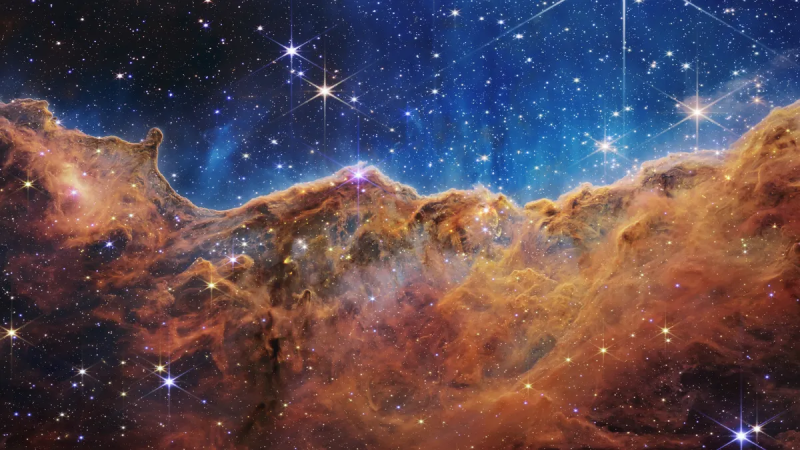
An image of the edge of a young, star-forming region in the Carina Nebula, captured by NASA's James Webb Space Telescope in 2022. (NASA, ESA, CSA, STScI/Handout via Xinhua)
Which raises a question. If the laws of physics governing our universe dictate that we only get a glimpse of the distant past of faraway objects, then would any intelligent beings out there looking for us only be able to see images of our own galaxy’s distant past? If it’s impossible for us to see them in the present, or them to see the Milky Way in the present, is it even worth looking?
Jason Wright, professor of astronomy and astrophysics at Penn State, gives us a reassuring answer.
"It's true that we see very distant objects as they were in the very distant past, but the nearest stars, where signals from intelligent beings would be easiest to detect, are not that far away. The nearest system, Alpha Centauri, is ‘only’ four light years away, meaning that if we detected a signal from them, it would have been sent just four years ago. There are about 15,000 stars within 100 light years, all of which we see as they were within a human lifetime ago."
CLICK HERE TO GET THE FOX NEWS APP
Over five and a half centuries later, NASA’s James Webb Space Telescope is showing us the universe as never before.
As for now, NASA is preparing a visit to the moon again. The mission, Artemis III, is planned for September 2026. It will be the first moon landing since 1972.
"We are returning to the moon in a way we never have before," NASA Administrator Bill Nelson said in a recent statement.
And then there is Mars. Who will get there first? The U.S.? China? Maybe even Elon Musk? It’s still just anyone’s guess.
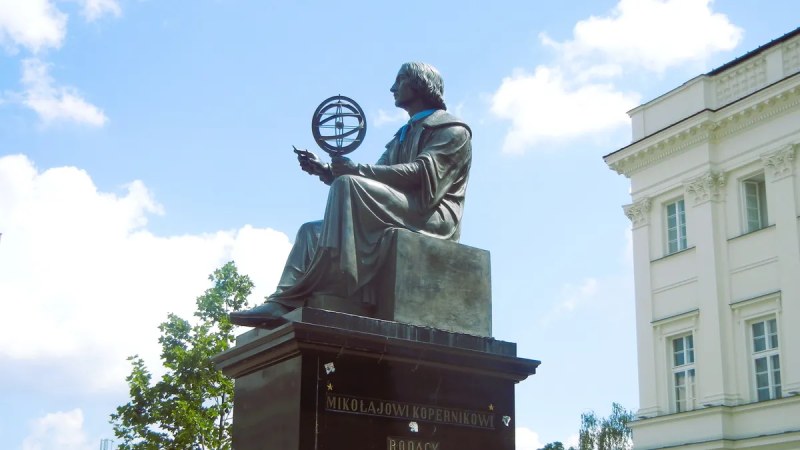
Nicolaus Copernicus Monument in Warsaw, Poland (Danuta Hamlin/Fox News Digital)
The scientific study of the universe has come a long way since the Copernican Revolution in Frombork. But Nicolaus Copernicus remains a beloved hero in his native Poland and an inspiration to astronomy enthusiasts around the world.
Disclaimer: The copyright of this article belongs to the original author. Reposting this article is solely for the purpose of information dissemination and does not constitute any investment advice. If there is any infringement, please contact us immediately. We will make corrections or deletions as necessary. Thank you.





